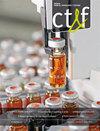圣克拉拉油田循环注汽数值模拟
IF 0.5
4区 工程技术
Q4 ENERGY & FUELS
引用次数: 2
摘要
本文介绍了在哥伦比亚使用先进的热过程商业软件构建、匹配和预测第一个热成分模拟模型时所使用的方法和获得的结果,该软件因其在模拟这些类型的过程方面的有效性而得到全球认可(CMG-STARS, 2005)。以圣克拉拉和巴勒莫油田为模型,实现了出色的历史匹配。所有28口井和17年的生产都进行了匹配。提出了两个生产场景。第一个涉及现有井的初级生产,换句话说:初级生产;第二个场景是将现场所有井转换为注水井和采水井,模拟循环注汽。该注入过程包括对该技术中涉及的几个参数的一系列敏感性研究,例如:注入压力和温度、注入时间和速度、注入热量、浸泡时间、蒸汽质量和注入周期。该敏感性研究的重点是优化工艺以获得最大的最终回收率。输入模拟器的信息由哥伦比亚研究所Petróleo (ICP)开发的实验室测试验证。在进行的测试中,评估了以下内容:岩石压缩性、不同温度下的相对渗透率曲线行为、地层对注入流体的敏感性、DRX分析和注汽原油的剩余饱和度。本文记录了上述结果。本文章由计算机程序翻译,如有差异,请以英文原文为准。
NUMERICAL SIMULATION FOR CYCLIC STEAM INJECTION AT SANTA CLARA FIELD
This article presents the methodology used and the results obtained in the construction, match and prediction of the first thermal composition simulation model done in Colombia by employing advanced thermal process commercial software, globally recognized because of its effectiveness in modeling these types of processes (CMG-STARS, 2005). The Santa Clara and Palermo fields were modeled and an excellent history match was achieved. All in all 28 wells and 17 years of production were matched. Two production scenes were proposed. The first involved primary production from existing wells, in other words: primary production; and a second escen where all the wells in the field are converted into injectors and producers, to simulate cyclic steam injection. This injection process included a series of sensitivity studies for several of the parameters involved in this technology, such as: pressure and temperature injection, time and rate of injection, heat injected, soaking period, steam quality, and injection cycles. This sensitivity study was focused on optimizing the processes to obtain the maximum end recovery possible. The information entered into the simulator was validated by laboratory tests developed at the Instituto Colombiano del Petróleo (ICP). Among the tests performed the following were assessed: rock compressibility, relative permeability curve behavior at different temperatures, formation sensitivity to injection fluids, DRX analysis and residual saturation of crude oil for steam injection. The aforementioned results are documented in this paper.
求助全文
通过发布文献求助,成功后即可免费获取论文全文。
去求助
来源期刊

Ct&f-Ciencia Tecnologia Y Futuro
Energy-General Energy
CiteScore
1.50
自引率
0.00%
发文量
7
审稿时长
>12 weeks
期刊介绍:
The objective of CT&F is to publish the achievements of scientific research and technological developments of Ecopetrol S.A. and the research of other institutions in the field of oil, gas and alternative energy sources.
CT&F welcomes original, novel and high-impact contributions from all the fields in the oil and gas industry like: Acquisition and Exploration technologies, Basins characterization and modeling, Petroleum geology, Reservoir modeling, Enhanced Oil Recovery Technologies, Unconventional resources, Petroleum refining, Petrochemistry, Upgrading technologies, Technologies for fuels quality, Process modeling, and optimization, Supply chain optimization, Biofuels, Renewable energies.
 求助内容:
求助内容: 应助结果提醒方式:
应助结果提醒方式:


